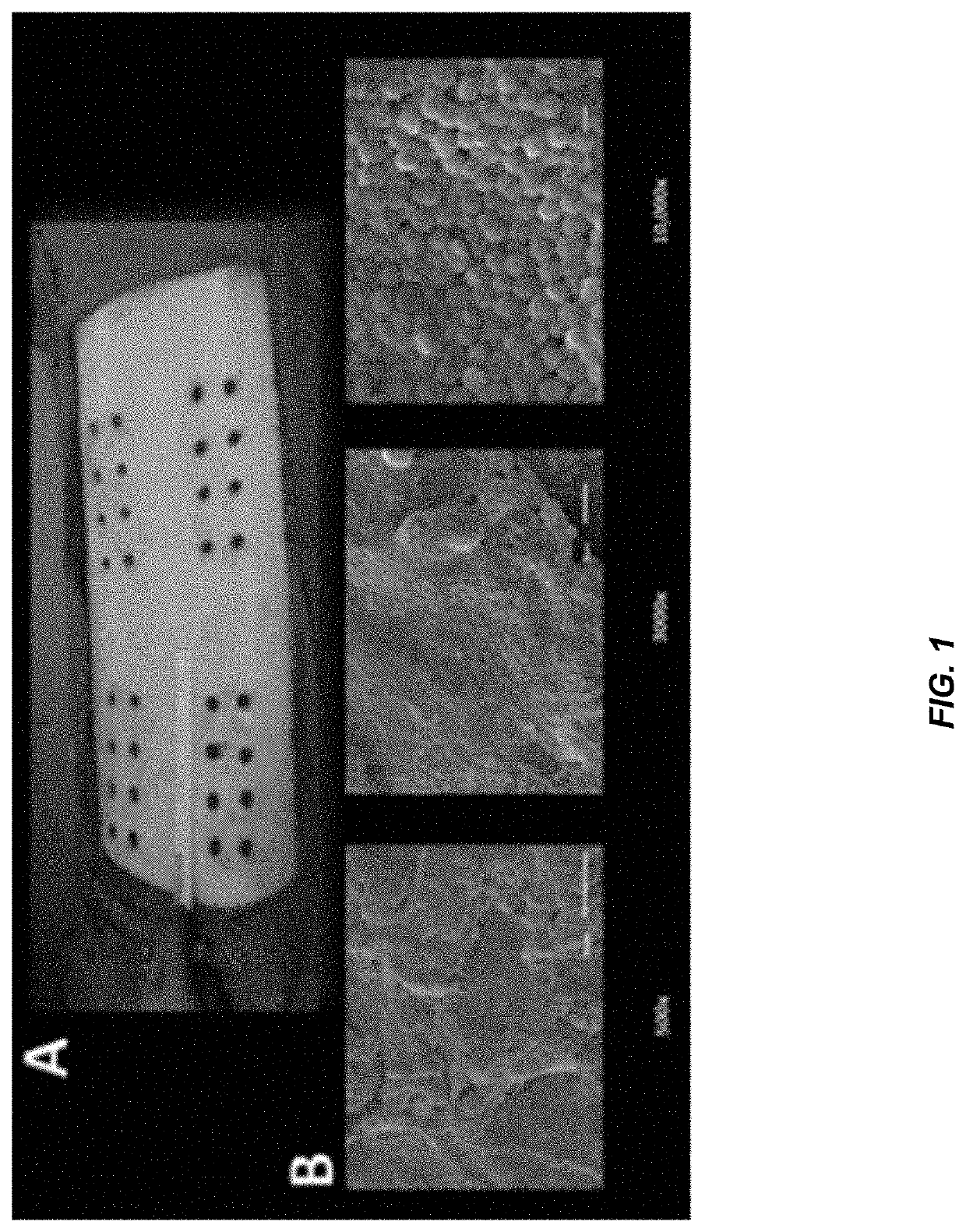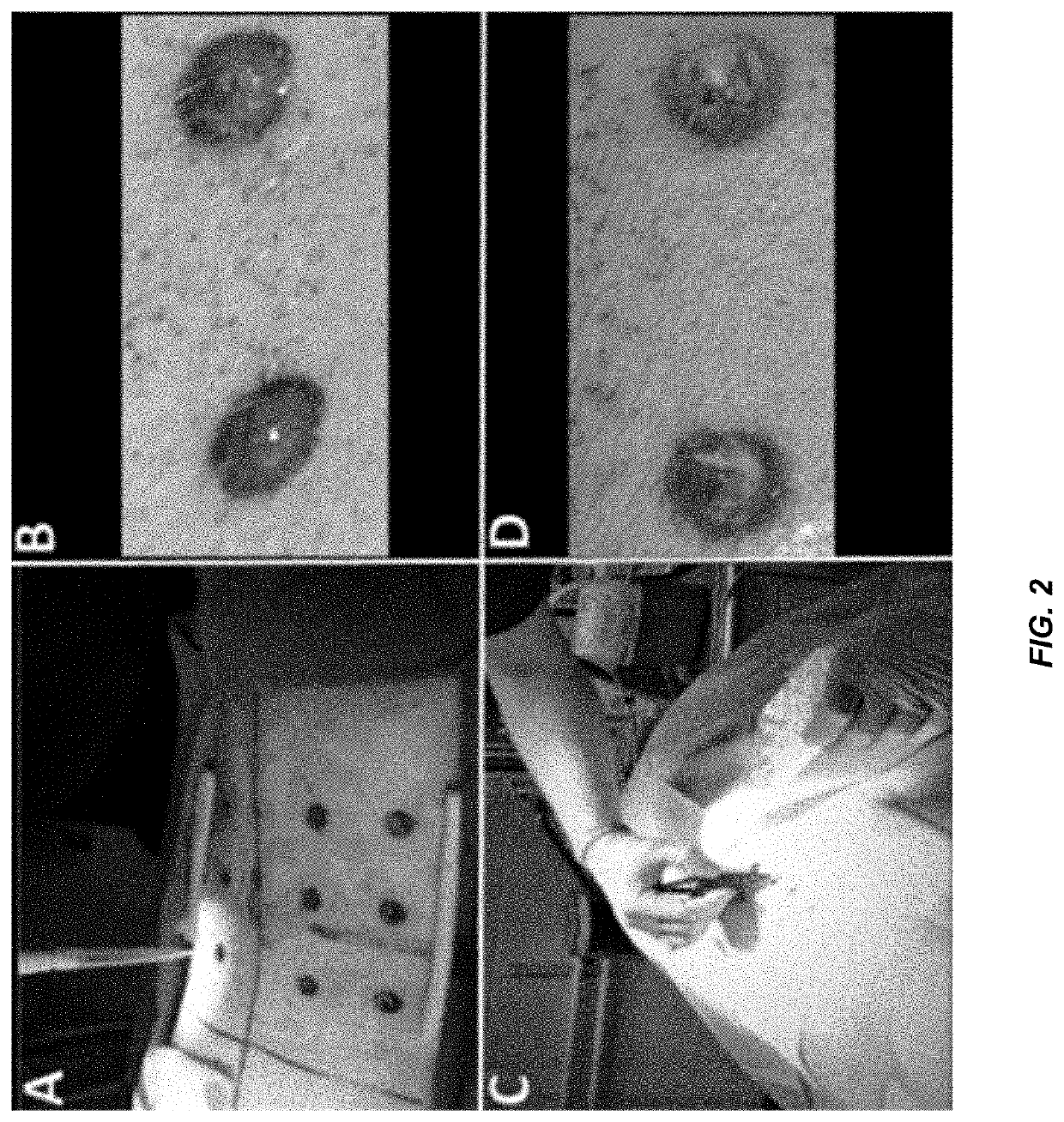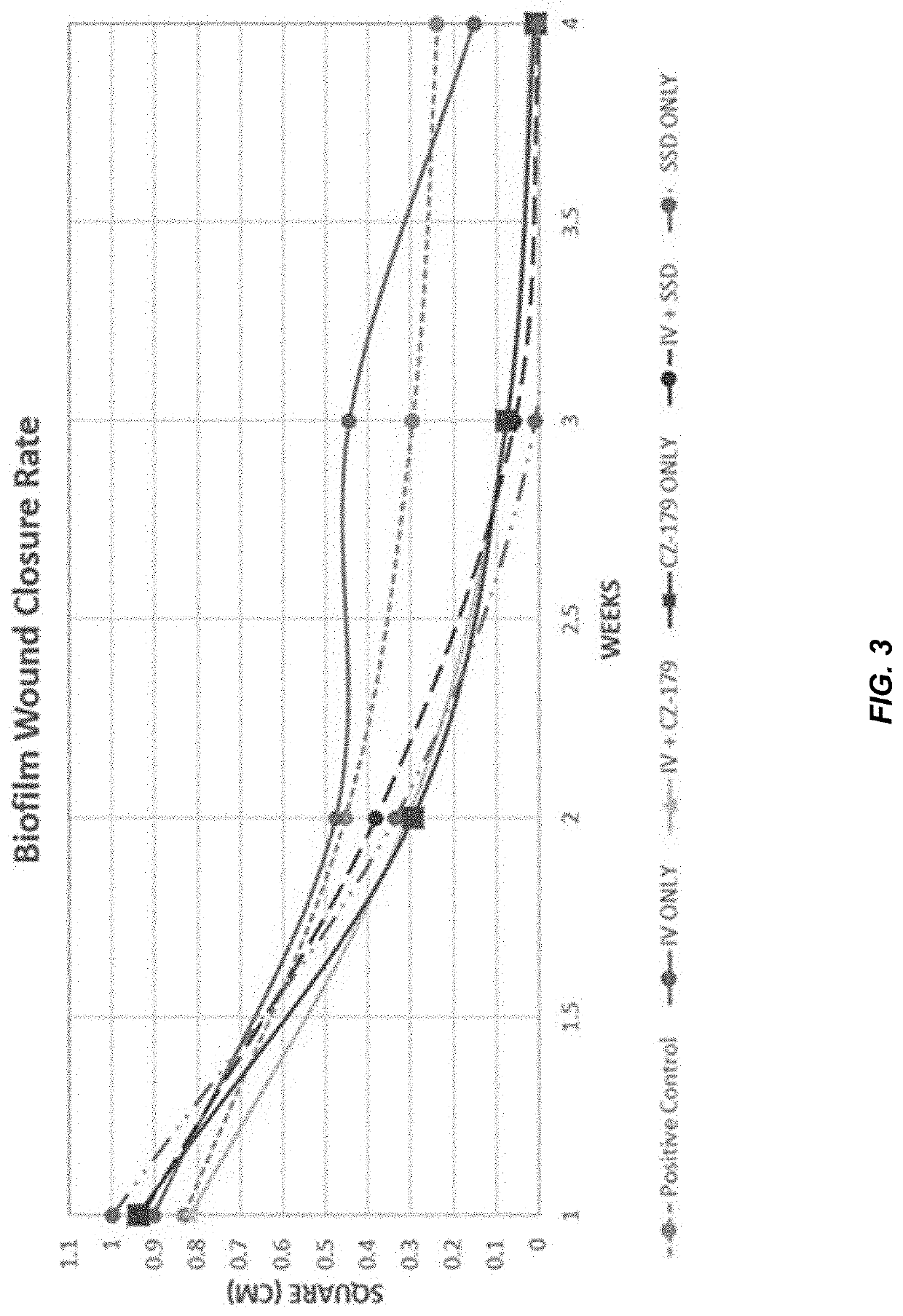Compositions and methods comprising a triaryl polyamine
- Summary
- Abstract
- Description
- Claims
- Application Information
AI Technical Summary
Benefits of technology
Problems solved by technology
Method used
Image
Examples
example 1
rocedure for Preparation of Polyamines
[0301]To a stirring solution of a dicarbaldehyde (e.g., 5′-(tert-butyl)-[1,1′:3′,1″-terphenyl]-4,4″-dicarbaldehyde: 2.12 g, 6.22 mmol, 1 equiv.) in MeOH (100 mL) and DCE (25 mL) at 0° C. was added a diamine (e.g., N1-(3-aminopropyl)-N3-(2-ethylbutyl)propane-1,3-diamine: 3.61 g, 16.79 mmol, 2.7 equiv.) portion wise over the span of 20 min. The solution was then left to stir for 16 h. NaBH4 (0.95 g, 24.88, 1 equiv.) was subsequently added portion wise over the span of 20 min and the reaction was allowed to stir for an additional hour. The solvent was then evaporated, and the crude solid was partitioned between EtOAc (500 mL) and 10% NaOH (250 mL). The NaOH phase was then washed with EtOAc (500 mL), and the combined organics were dried over Na2SO4. If desired, column chromatography can be performed using gradient conditions starting at (300:16:1 CH2Cl2:MeOH:NH4OH). The free base was acidified with HCl in MeOH (100 mL) and then placed at 0° C. for 1...
example 2
rial Activity of Triaryl Polyamines
[0320]The polyamine compounds were tested for antibacterial activity against four strains of bacteria: MRSA, P. aeruginosa, A. baumannii, and E. coli.
Materials and Methods
[0321]A clinical strain of MRSA, isolated from a patient who underwent arthroscopic knee surgery and characterized by ARUP Laboratories, Salt Lake City, Utah, was used for this study in addition to Pseudomonas aeruginosa ATCC 27853 and Alcanivorax borkumensis ATCC 700651. P. aeruginosa was resuspended in BHI broth, grown overnight at 37° C. and transferred to fresh BHI with 30% glycerol for storage at −80° C. The MRSA isolate was likewise stored in BHI with 30% glycerol at −80° C. Notably, the clinical MRSA isolate was not passaged more than three times prior to or during the study. Before performing MIC analysis and biofilm experiments, the frozen stocks of MRSA and P. aeruginosa were streaked onto Columbia blood agar plates and grown overnight at 37° C. A. borkumensis ATCC 7006...
example 3
ling Study
[0331]Biofilm-impaired, difficult-to-treat wounds constitute a significant challenge that affect nearly all military and civilian healthcare facilities, and pose a unique challenge in the case of decubitus ulcers. Calhoun et al., CORR, 2008; Murray, J Trauma, 200; Murray, Crit Car Med, 2008. Compounding the problem is the current global threat of antibiotic resistance. CDC Threat Report, 2013; Wolcott et al., J Wound Care, 2010; Williams and Costerton, JBMR, 2011. To address these problems, a unique, first-in-class series of antibiofilm antibiotics has been developed that demonstrates a 2-in-1 ability to disperse and kill bacterial biofilms. These agents are referred to as CZ compounds and have been shown to display broad spectrum activity with reduced risk of resistance and focused activity against biofilms. In this study, in vivo analysis was performed using a porcine excision wound model to assess the efficacy of a leading CZ (CZ-1-179) as a topical agent against both p...
PUM
| Property | Measurement | Unit |
|---|---|---|
| Density | aaaaa | aaaaa |
| Density | aaaaa | aaaaa |
| Density | aaaaa | aaaaa |
Abstract
Description
Claims
Application Information
 Login to View More
Login to View More - R&D Engineer
- R&D Manager
- IP Professional
- Industry Leading Data Capabilities
- Powerful AI technology
- Patent DNA Extraction
Browse by: Latest US Patents, China's latest patents, Technical Efficacy Thesaurus, Application Domain, Technology Topic, Popular Technical Reports.
© 2024 PatSnap. All rights reserved.Legal|Privacy policy|Modern Slavery Act Transparency Statement|Sitemap|About US| Contact US: help@patsnap.com










